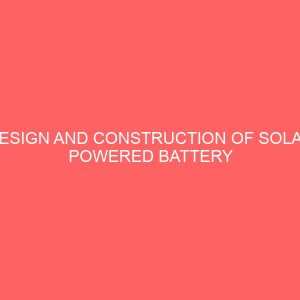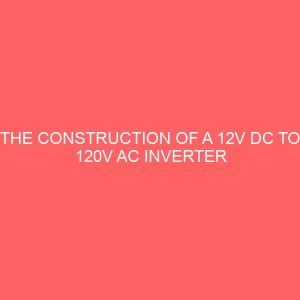Description
Abstract
In todays environmentally conscious climate there is more and more interest being taken in alternative forms of power supply. Currently there are plans underway for a new Engineering Building for the University, in which it is hoped that some of these alternative and more environmentally friendly technologies may be incorporated. The purpose of this project is investigate the feasibility of implementing a mobile phone charging system, to be used by students, which is powered by energy generated from solar panels that may be integrated into the fabric of the building. This project involves designing a small scale mobile phone charging system which is powered via a solar panel and that is capable of charging multiple mobile batteries simultaneously. The project also requires research into the different solar panels available for the small scale system being designed, as well as into larger solar panels that may be implemented into a buildings design. Investigations will also have to be made into how the overall system would change if these larger solar panels were implemented. The small scale test system will also be able to display information visually to the user of the system regarding the systems overall capacity to charge at any given time and will also include power management functions.
Chapter 1: Introduction
Solar power is a renewable source of energy, which has become increasingly popular in modern times. It has obvious advantages over nonrenewable energy sources, such as coal, oil and nuclear energy. It is nonpolluting, reliable and can produce energy anywhere that there is sun shining, so its resources are not going to run out anytime soon. It even has advantages over other renewable energy sources, including wind and water power. Solar power is generated using solar panels, which do not require any major mechanical parts, such as wind turbines. These mechanical parts can break down and cause maintenance issues and can also be quite noisy. Both of these issues are virtually nonexistent with solar panels. Also, the solar cells, that connected together make up the solar panel, can last up to several decades without replacement.
However, there is a drawback to solar power energy can only be produce when the sun is shining. To overcome this, usually solar panels are coupled with back up rechargeable batteries, which can store excess power generated during the day and use it to provide energy to systems when there is no sun shining. In this way solar power can be used to power houses and other large scale systems. In these systems DCAC conversion is needed. This is because the solar panel produces an output that is DC Direct Current and the power supply in homes usually runs off AC Alternating Current, so conversion is required. For this project, however, the load to be connected only requires DC input, so DCAC conversion is not needed. Instead, DCDC conversion would be used to provide the correct power to the system from the power generated by the solar panel. Using this information, a number of design solutions were determined and considered.








Reviews
There are no reviews yet.